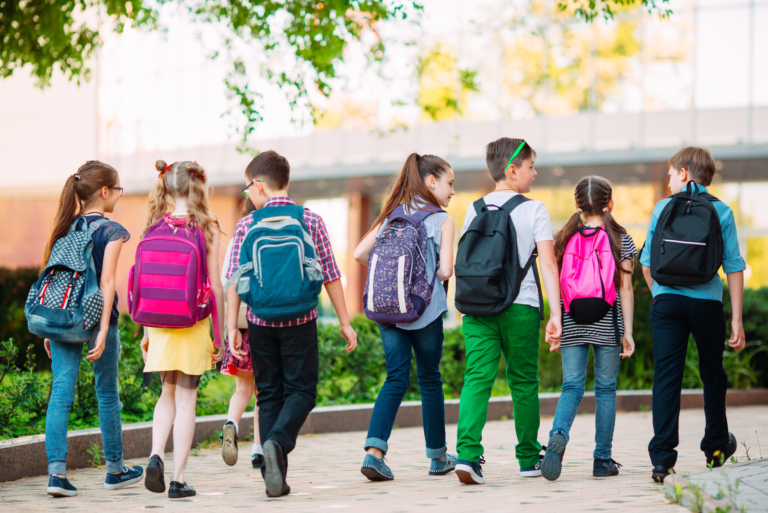
How Can Schools Prevent Gun Violence and School Shootings?
In recent years, there has been an increase in gun violence at schools across the United States. As of December 20, 2022, 300 school shooting incidents have reached an all-time high in any given year. As a result of this anomaly, our schools which are supposed to be a haven for learning, are now a breeding ground where violence can spontaneously erupt at any time. Although things may look grim, there is a way out. Schools can prevent gun violence and school shootings by fiercely advocating for safer schools and implementing a combination of several school programs, which we will discuss later in this article. Click here to take action now.
What Is Gun Violence and What Causes It?
Gun violence is any act of violence that is achieved with firearms. Actions that fall under gun violence can include homicide, violent crime, attempted suicide, suicide, and unintentional death and injury. These acts may or may not be considered criminal. The surge in gun-related violence often questions the laws surrounding gun weaponry purchase, ownership, and gun purchasing regulations in each state. Unfortunately, in some cases, this has led to the indiscriminate use of guns by people of all ages. Guns can be easily accessed, leading to gunfire paranoia, where people quickly resort to gun violence at the slightest provocation. School shootings have further developed and thrived within such an atmosphere.
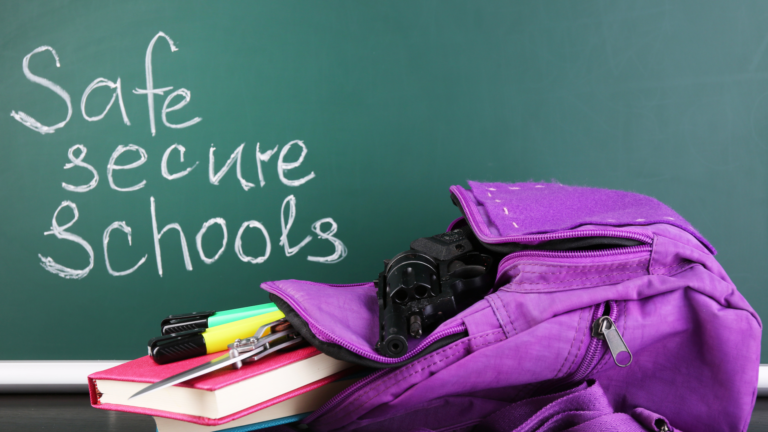
What Causes School Shootings?
Most perpetrators of school shootings are either students of the affected institutions or former students of the same. In other cases, however, some of the persons involved in these grave crimes are instigated by others (especially fellow students) to commit such crimes. Some attackers were bullied or pushed to reach anger limits, leading to criminal heights because of self-esteem issues caused by school bullying or hate speech. On the other hand, school shootings are caused by definite reasons linked to issues like mental health, depression, and substance use.
A repeat instigator for violent hate crimes is caused by hate speech, which is the same scenario for many other school shootings: bullying and hate speech are the primary instigators. A clear example is the Uvalde school shooting: the perpetrator was bullied for years and was also a victim of hate speech. Hate speech was a foundational root cause of his development. Things could have been different if he had kinder treatment or had a better mindset.
While there is no justification for a school shooting, it is essential also to find and quiet the issues that lead to such acts. Bullying and hate speech happens in most of our schools. Between 2018 and 2019, over 1.3 million students (between 10-18) experienced bullies in schools. If such activities continue to go unchecked, then we sure have a lot of potential sorrows waiting to happen. Click here to take action now.
Learn more about our Capiophobia Awareness and Prevention Program or our Saved By The Kindness Bell Program here.
How Is the Capiophobia Crisis a Threat to School Safety?
Capiophobia could affect almost anyone, as there are many reasons people would not want to get involved with the police. Kids in schools are usually wary of getting involved with the police. People are often scared of being arrested or even interrogated by the cops. The fear of the police makes it difficult to report crimes even if they have essential information. The communication barrier between the capiophobe and law enforcement prevents students from reporting suspects or threats. If there were a way to promote police as more friendly and approachable to students, it would help ease the strain on students who report crimes or suspects.
Scenario 1
You are in high school, and you notice a student quietly journaling in his journal while in class. You’ve often observed this person from a distance and felt he seemed sad and possibly depressed around other students. Some of the kids in your grade make fun of this quiet person. Other classmates call him mean names and make mean jokes about him constantly. On this particular day, the teacher assigns a group project and groups you with this quiet person during a classroom project. As the classmates quietly rearrange their desks to sit with their teacher-assigned project partners, your silent partner accidentally drops his journal near your feet. You kindly reach to pick it up and hand it back to your partner, but you notice the journal has fallen open to a disturbing page.
You quickly scan through the problematic page and hand it back to your classmate while cautiously pretending not to have noticed anything strange. Your heart starts racing, and you begin to panic. The student had been secretly journaling his intent to shoot several of his school bullies in his school during an upcoming holiday. You don’t know if he is serious or just venting his frustration, but you feel pulled to tell a safety officer about the threat you unintentionally discovered. As you ponder what to do and how to do it, you begin to feel anxious and panic.
You remember how much you fear the police. With all the police brutality incidents blaring on the news station so often, you begin to question the integrity of the police officers and if you can trust them. You decide bravely to approach the school’s assigned safety officer during lunch. As you walk towards the police officer during lunch, your head begins to spin. As you get closer to the safety officer, you become numb and lose your thoughts and speaking ability. Anxiety, panic, and shaking overtake your body. The safety officer places one hand on his gun holster, looks at you, and smiles. That’s when you jolt and head straight to the bathroom, splashing your face with cool water.
You begin to ask yourself, “What is happening to me? I never knew I could feel so out of place near a police officer. When I go numb around the safety officer, how can I do the right thing and report the potential school shooting threat?” Then you ponder how to tell someone about the potential school shooting threat without doing so directly. You begin to ask yourself, “How do I report a crime or potential crime anonymously? What if they don’t believe me and arrest me instead? How do I know who to trust?”
You calm down after fifteen minutes and decide to do nothing. You’re unsure of the best solution, and you don’t want to get falsely blamed for something you didn’t do, so you ignore the problem altogether because the fear of the police is too overwhelming to deal with right now. You decide to try again tomorrow after your nerves have calmed down. The next day, you plan to speak to the safety officer. It is now day two, and as your mom drops you off in front of the school, you see kids running and screaming. Kids are panicking everywhere and screaming, “A shooting! A shooting!” Your heart sinks. You break down in tears and ask your mom to take you home. You know what happened, and now you feel guilty and responsible.
Unfortunately, many people have had bad experiences with the police, sometimes while breaking the law. Others have done nothing wrong but adopted a fear of the police due to unpleasant police encounter experiences they have experienced or stories about police brutality coming in through the media, social media, friends, or family members. In this extreme scenario, we observe a student unaware of his capiophobia symptoms kicking in around a police officer. Following this scenario of confusion about anonymous crime reporting programs and a school shooting that may have been prevented if reported and intercepted on time.
Anonymous Crime Reporting Inc. focuses on connecting the bridge between individuals who fear the police and law enforcement. Capiophobia is known as the fear of the police or the fear of getting arrested and has become a thing in society today. Sometimes people develop a fear of the police or a fear of getting arrested due to irrational or rational fears. Contrary to common belief, people living with capiophobia do not mean those people are guilty of committing a crime. Our anonymous crime reporting resources offered by privately owned non-government affiliated organizations promise to protect the identity of the crime reporter. We also provide a free capiophobia awareness and prevention program and a kindness and character-building program for public schools.
How Can a Bullying Prevention Program Help Prevent School Shootings?
Bullying instigates hate, causing many to take their own lives or harm others. An anti-bullying program empowers students and faculty with a proven and effective strategy for preventing bullying and how to respond when things escalate. Teaching students and faculty to identify bullying behavior in students is a proactive measure to create safer schools. In addition, implementing a kindness program promotes safer and kinder schools, which aids in promoting positive environments, and reduces bullying behaviors.
An excellent place to start will be to teach bystanders to stand up to bullying anytime it happens. Most bullied people feel lonely and deserted because so many are aware and do nothing. Schools should enforce stronger rules against bullying that will not only deal with bullies but those who aid and abate in it, witnesses who keep numb, etc. If programs and regulations like these existed, we would have fewer school shootings to report today.
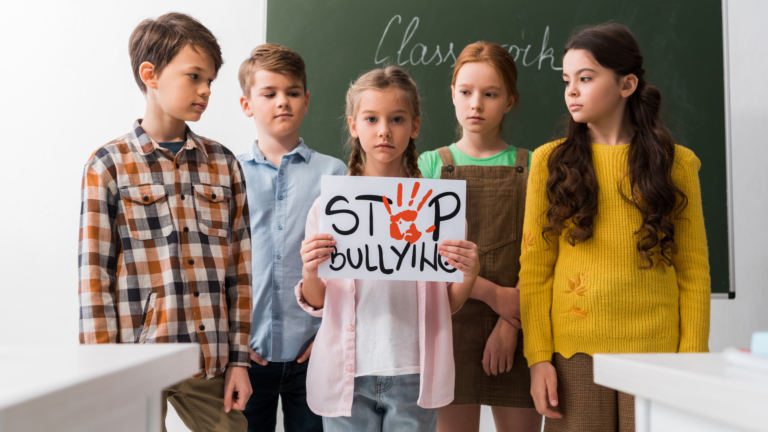
How Can a Community-Focused Policing Program in Public Schools Help Prevent School Shootings?
A community-focused policing program creates a cordial relationship between cops and community members. The benefits of this program are that students become comfortable around police officers, allowing students to develop their own opinion about the police without any negative environmental factors or upbringing responses outside of their school environment. Capiophobia affects students negatively because they would likely not speak up about a threat, a potential threat, an assault, or even a crime they witnessed or discovered.
The best approach to combatting the capiophobia crisis is prevention through education and frequent face-to-face interaction with police officers at an early age. While these programs would be incredibly effective in middle and high schools, implementing this program in elementary schools should become the stronger focus. If kids in schools know the police officers in their community and have a rapport with them, they will believe over time that the police are there to serve, help, and protect. If this is the norm in communities, capiophobia will become a thing of the past, as students will have less reasons to fear cops.
The indicated measures will make it possible for kids to report any suspicious activity without worrying about getting on the wrong side of the issue. Kids will report bullying to adults or a safety officer and report suspicions of violence early enough to snuff out any related threats. If students inform a safety officer quickly, the proper authorities can take the appropriate measures earlier. Proactive measures like these could save our schools from many misfortunes.

How Can a Capiophobia Awareness and Prevention Program Help Prevent School Shootings?
When the community fears the police, criminals and criminal activity gain momentum. The image of law enforcement officers as figures of safety and security has been skewed through the spread of capiophobia, leading to a nearly severed desire to communicate with law enforcement by many students in America. The spread of capiophobia is paving the way for organized crime to implement their criminal agendas throughout our Country boldly.
Our responsibility as good citizens of our Country is to preserve justice, restore the damaged civilian-law enforcement relationship, and sever the plans of criminals and the spread of organized crime in our nation. Capiophobia may not seem like a big problem to many, but it truly is too big a problem to ignore. Unfortunately, many students and adults have lost their trust in law enforcement. Many people live with the fear of the police or the fear of being wrongfully arrested. People with capiophobia could see something and choose not to say something to protect themselves out of fear.
Anonymous crime reporting programs are vital in opening a communication pathway between people living with capiophobia and law enforcement. Such programs create a situation whereby a crime about to be committed, in progress, or has been done is being reported to law enforcement anonymously. The reporter’s identity is made anonymous and undisclosed to the authorities, or the reporter could also be anonymous in reporting the crime to law enforcement.
The reporter’s identity protection in the anonymous crime reporting programs below allows for complete anonymity in reporting crimes and direct reporting of the crimes. How can this mechanism be helpful for people living with capiophobia? It helps to alleviate their fear and portrays them as good citizens. It helps them support justice in society since their identity is protected, improving their trust in law enforcement. Reporting crimes anonymously often leads to a more honest report of a potentially dangerous situation or crime because the person living with capiophobia isn’t uncomfortable with face-to-face law enforcement interaction, the trigger of the phobia itself. Learn more about our capiophobia awareness and prevention program here.
How Can Rewiring the Mind Prevent Gun Violence?
A child’s home is where the first instructions for life take place. Home is where we form our attitudes about life, God, family, and friends. These instructions lay our foundation for future life experiences. We take our molded characters from our homes into the real world, where we respond and react according to our unique personalities. The school environment is the second place a child receives life instructions. School is where we learn to expand our experiences with new lessons, friends, teachers, sports, and other activities.
Our work environment is where we encounter challenges and relationships. We contribute meaningfully to society when we put our attitudes, experiences, and skills into practice by reflecting a strong positive mindset and showing kindness towards our work colleagues, family, and friends. Suppose the home, where a child first learns instructions for life, is challenged with a dynamic environment with toxic challenges. Settings like these would mean that the child would have to rely on the secondary place of education (the school environment) to gain the necessary skills for learning how to treat others, learn acceptable manners, be kind towards others, learn to control emotions, etc.
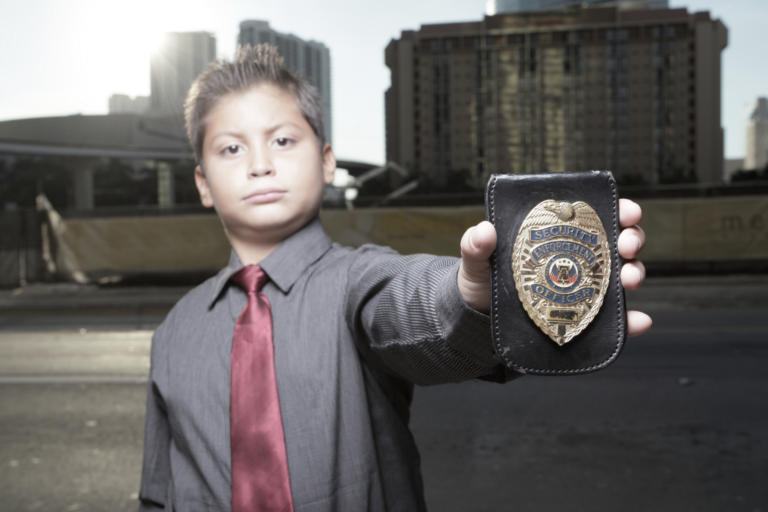
School Safety Measures Concerning Gun Violence Prevention
It is becoming increasingly important that schools take precautionary measures as it concerns gun violence. The unfortunate incidents that have rocked our schools in the past are not the best moments for a deja vu. Schools must put in place preventive measures to ensure safety. Here are some suggestive steps schools can take to prevent the chance of a violent school shooting occurrence.
Promote positive school culture: Schools should promote a positive culture that is loud on inclusivity, respect, and empathy. Schools can achieve this by implementing programs that promote positive behavior, conflict resolution, and bullying prevention. This last point is critical, as most cases of gun violence usually erupt from bullying. Students should learn to stand against bullying and report any such occurrence.
Provide mental health support: Providing the necessary environment for kids to open up about their issues is critical. Students should know how to recognize their mental health issues and how to help others realize their mental health issues concerning capiophobia and bullying-led depression. Programs that focus on assisting students to maintain mental stability are essential.
Kids that are usually involved in gun violence show some symptoms. Counselors should be trained and available to help kids with these problems. Identifying a potentially bullied kid or bully can be taught to the kids and staff to help call the school’s authority attention to such cases.
Implement security measures: Schools should also put effort into building a more secure environment that would make it difficult for attackers. These measures may include the installation of security cameras, metal detectors, and locked doors. Schools may also consider hiring trained security personnel or resource officers.
Implementing Staff Training with Skills To De-Escalate a Threat.
If there was ever a time when school staff needed preparation skills to de-escalate a threat, it’s now. The likelihood of gun violence or similar incidents occurring is pretty high, and school staff having the required training can be the difference between relief and tragedy.
Training like this can help puncture the probability of a gun incident occurring. Such activity will make it easy for staff to recognize warning signs, diffuse tense situations, and intervene before they escalate into violent behavior. When conditions have gotten out of hand, a team can take the initiative to take actions that would save lives and reduce casualties.
Knowing what to do in a crisis will make the school safer and more secure for students. Schools should include students in this call to the initiative. They should be well-informed about what they can do to prevent gun violence in schools. Here are ways in which students can contribute to the safety of their schools
Speak up: most times, schools could have avoided gun violence if students had just voiced out a complaint. Of course, it was usually out of disregard or fear. But the recent developments now make it germane for students to speak up in certain situations, including instances when a particular student, encounters bullied treatment or when they hear the news that could spell doom. The best thing to do would be to open up to an adult or a school authority.
Advocate for change: If our schools and students are loud in advocating for change, it will create a public consciousness of how terrible gun violence is. Supporting a change would go a long way in promoting peace and safety in schools.
Stay informed and prepared: The current situation requires students to show high responsibility. Follow instructions from authorities, and take any threats seriously. Student engagement would require that they stay knowledgeable about school policies and proceedings concerning gun violence and school security. They should also be taught the school’s emergency plan and take it seriously.
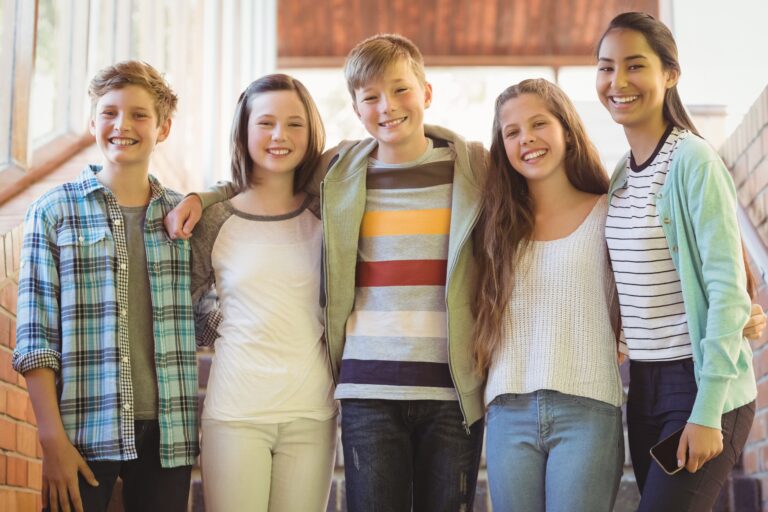
Kindness And Character-Building Programs Are Essential in Keeping Schools Safe.
Although some schools have incorporated teaching kindness and character-building skills, some schools need more money to implement additional value-added material into the classroom. When you think about the cost-benefit of a kindness and character-building curriculum, you probably don’t think about how this could save lives and keep your school safe. Character-building activities and implementing a kindness program from an early age can promote a positive fiber in students’ minds. Schools cannot control the external factors a student encounters outside of the school and should not solely assume that all students constantly surround themselves with positive adults who can spend enough time teaching kindness or character-building skills.
The Mindset of a Violent Gun Shooter.
One constant thing that has surfaced in every investigation of almost every gun shooting case is a bitter history of hatred and abuse that has yielded sour fruits of hatred, selfishness, and anger. The frontline of all this is bullying. The danger of the hunted hunting the hunter is becoming a reality, and there are clear statistics to show it. According to research by the University of Washington School of Public Health, kids bullied in school are more likely to be found with a loaded firearm without adult permission.
Basing their research on the 2011 and 2013 school shooting crimes and supplemented by the National Crime Victimization Survey, the research showed that there is more likelihood of gun crimes among adolescents. A study involving over 10000 kids aged 12-18 discovered that almost 5 percent could access a loaded weapon without adult permission. Controversially speaking, many believe these acts are relative to our gun culture, and there is ever more sad news to report as time progresses. If this was indeed the only case, why are so many suspects bullied? It paints a bigger picture when you look at it from a different perspective. Students that are bullied or emotionally challenged are typically the ones who initiate hate crimes such as school shootings.
Among these 5 percent, only those with a history of bullying were more likely to report access to weapons. The kids who have conventionally suffered physical and verbal bullying were two times more likely to be found possessing a loaded firearm. In comparison, those who have experienced cyberbullying were three times more likely to be found possessing a loaded weapon. Do note that this survey strongly emphasizes this is happening without prior permission or knowledge of any adult. Let’s face the truth: these bullied kids will likely get it up to the neck. The psychology behind the evolution of a violent gun shooter is simple.
While there is no defense for such a heinous crime as a gun shooting, it’s germane that we understand how the disregard and lack of kindness displayed in many of our schools towards bullied students go a long way in cooking up the violent gun shooters we so dread. Students constantly bullied on the ground or online feel unprotected, hated, rejected, and marginalized. It’s not just the fact that a group of people bullies them. It’s more about the bit of insanity that follows as everybody either laughs along or stands by while it happens.
This act implicates the rest in the mind of the bullied. Everyone should help them stand up to bullies in real time and online. Nobody does, most of the time. Failing to assist a bullied student leaves the bullied kid in a terrible state where they see everyone as bullies or facilitators of the same. They begin to develop hatred for the bullies and the perceived facilitators quietly, everyone who ignores the bullying. They find ways to protect themselves from a world that doesn’t care about hurting them.
In the heat of fear and hatred, they feel the best thing to do is take actions that make others fear them. Easy access to guns now plagues our nation and is a ready opportunity for these bullied kids to retaliate. They can make a statement, albeit in deep hatred, anger, and fear. Students bullied or with bottled-up anger can retaliate violently to dissipate negative emotions. Sometimes, it’s just the need to vent to those who have made them feel miserable all along. Unfortunately, this is a purview into the mind of the average shooter. While some people may not fall under this category, there is no denying that many good kids have instigated violent gun acts due to bullying.
Dr. Masaru Emoto Advocated for Peace Concerning Water In The Emoto Peace Project. Learn More In The Video Below.
How Acts of Kindness Affect Our Brain.
The old song suggests trying out a little kindness. It’s no secret that kindness overwhelmingly positively affects the mind. When people receive acts of kindness, it resets their mood and affects their mentality. When people experience acts of kindness from others, it releases different hormones in the body, creating an air of acceptance and joy in the recipient. Also, people who receive acts of kindness are less likely to feel rejected. It also helps against depression and can break a cycle of bad feelings and thoughts. One kind act can go a long way in helping a person who has been bullied and spoken to unkindly.
It’s All About Relationships.
Learning how to treat others with kindness sets a person up for success in the future. We already know that our environment, bodies, and body water react to hate speech and words of affection. When we commit ourselves to acts of kindness, volunteer work, or paying it forward activities, we are releasing the correct type of energy into the environment and our bodies. Based on the scientific evidence provided by the famous scientist Masaru Emoto, it is worth the effort to combat hate speech and replace it with words and thoughts of love and kindness.
Since our bodies comprise 60% to 70% of water, protecting our energy and environment from negative feedback is essential. Based on the rhetoric of protecting water molecules from harmful speech, we can promote a kinder environment in our schools and workplace by simply learning to be kind and selfless and identifying the appropriate balance to both actions. In a world full of selfishness and the promotion of self-love, people can often find the true secret to joy by putting their faith first, others second, and themselves last.
When you look at any school that has experienced gun violence, they would never have thought the way one kid could have caused so much harm and havoc. Also, it would mean much winning for everyone if we learned to be kind and speak kindly. Read more about our free public-school kindness and character-building program below.
Healthy forms of selfless love show a relationship between us all. What we do to one person, no matter how little or insignificant, affects us all in the long run. If we offer kindness to kids instead of letting people bully them and walk over them, we would be surprised how this could help release the violence and evil thoughts in the minds of those who have been bullied.
De-Escalation Techniques for Angry Students.
De-Escalation is a susceptible task and must require an approach with much caution. Failure to be cautious could lead to a lot of misfortune. Hastiness in this matter could have an adverse effect, so it is crucial to say the right things. Speaking negatively or out of tone could be the end of a conversation. As the wise saying goes, “Some speak rashly like the cutting of a sword, but what the wise say promotes healing.”
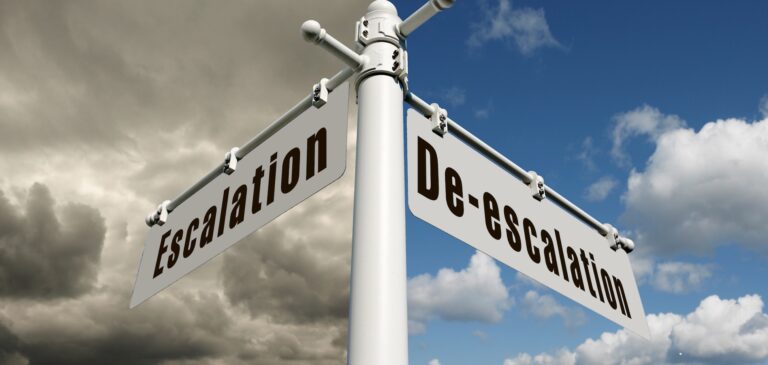
Ensure that the student notices your kindness and polite nature. Our voice’s tone and attitude are crucial elements in talking to an angry student. You must speak like one who cares about them and what they have been experiencing. It would be best if you looked towards their healing. Also, use pleasant and kind words in your communication. The book of wisdom says, “Pleasant words are honey from a honeycomb: sweet to the soul and healing for the body.” It’s therefore important to answer with words that would aid healing and not hurt the angry student. Like it or not, they feel they are the victim somewhere in their mind. There is truth within that narrative that we must validate. Ensure that you speak to heal the hurts that have happened.
It’s essential to know the mind of the average violent shooter. Knowing what they’ve been through and what they feel like would help rewrite their minds and thinking. Also, we cannot overemphasize kindness; we can combat the problem of school shootings aggressively with kinder students. Being kind, speaking kindly, and doing kind acts can all culminate in a change of heart in a person planning gun violence. Seeing everything through the eyes of a relationship is also essential. Things are interconnected and could create ripple effects on people. The way we relate with people could go a long way. Lastly, speaking the right words could do wonders. Speak words that are pleasant and in line with healing. Kind words and attitudes help calm the angry student and reduce the possibility of a crisis.

LEAPS
In a crisis, teachers can use the LEAPS method to resolve a dispute. To make it easier to remember the steps, the word “LEAPS” can help you remember them.
Step 1)
Listen closely to what the other person has to say.
Step 2)
Empathize with the other person genuinely by trying to understand their feelings.
Step 3)
Ask questions to get more information from the other person by asking probing questions, including asking who, what, when, where, why, and how.
Step 4)
Paraphrasing what you have heard shows the other person that you are listening. It assures the speaker that you understand what they are saying. For example, you can say, “Let me ensure I heard you correctly. You said ____________.”
Step 5)
Summarize by giving the speaker a possible solution to the situation. For example, you can say, “From what you’ve said, let’s __________________.”

Responsible Gun Ownership Can Prevent School Shootings
Student access to guns has led many students to commit gun violence and school shootings. Not all students are candidates for gun violence or likely to contemplate committing a violent act with a weapon they can access from home. Sometimes parents, guardians, and grownups aren’t aware of the dynamics a child or teen is surrounded by. Communities can take this most critical measure to prevent gun violence and school shootings.
Locking guns in an appropriate gun safe and using additional gun safety measures such as trigger locks is essential in promoting responsible gun ownership. This simple act alone can reduce and prevent another school shooting forever. Suppose every gun owner in America took action, locked their guns away in a safe, and used additional locking devices. In that case, we’d have a simple solution to the horrific gun violence in schools today.
Free Resources for Gun Safety
Gun owners can order a free gun safety kit from Project Child Safe—pending program and supply availability. Inquire with Project Child Safe at https://projectchildsafe.org/a-teens-story/ about how you can receive a free gun safety kit to ensure your guns are safely locked.
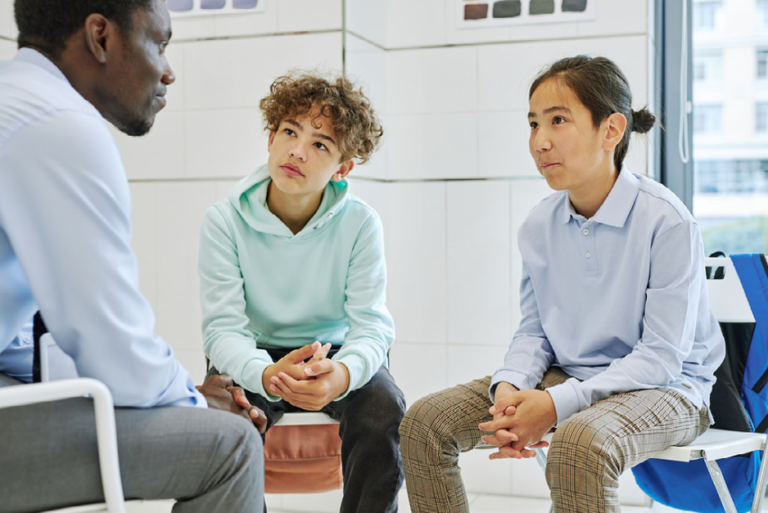
Mental Health Services for Bullied Students and Students Living with Capiophobia
Mental health student concerns are something that cannot be over-emphasized. One of the noticeable trends with school shootings is that most perpetrators were people with mental health issues. The mental health of these perpetrators put them in positions where they were, in their eyes, victims. These actions resulted from all the problems they had suffered at other people’s hands. Unfortunately, it affected their mental health greatly and led them to the point where they became a source of danger not just to themselves but to the people around them.
Furthermore, most people who put them in such states were students like them. A correlation between mental health and a student-aged school shooter displays that students’ mental health is a significant issue that shouldn’t be taken for granted, as ignorance could escalate into something as serious and deadly as a gun shooting. Recently, it has been difficult for kids to engage with cops as they are usually afraid of being branded as suspects and accomplices. The fear of the police needs to be more proper, as they are there to help society.
Schools should focus on handling capiophobia and bullying. Students should learn that reporting a case doesn’t implicate a person. They should also become comfortable that cops at their school are there to help make things better and safer. Also, programs could become implemented where the police and kids come together, which can help ease the pressure and make the kids see the cops as they are: those willing to help. Click here to take action now.
Resources:
Girgis, R. 2022. “Is There a Link Between Mental Health and Mass Shootings?” Columbia University Department of Psychiatry. https://www.columbiapsychiatry.org/news/mass-shootings-and-mental-illness#:~:text=Approximately%205%25%20of%20mass%20shootings,cases%20these%20conditions%20are%20incidental/
Stopbullying.gov, 2021. https://www.stopbullying.gov/bullying/effects/
Siegle, S., 2020. “The art of kindness.” Mayo Clinic Health System. https://www.mayoclinichealthsystem.org/hometown-health/speaking-of-health/the-art-of-kindness/
Park, J., 2017. “Increased gun violence risk among bullied students.” The Nations Health. https://www.thenationshealth.org/content/47/7/E32/
2023 Copyright All Rights Reserved. Last edited on 07/31/2023 by Mihaela Dorca


